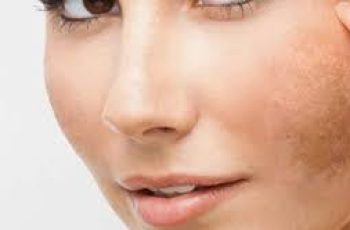
The Science of Emollients in Skin Care
Emollients are an important component in many skincare products, with their main purpose being to smooth and soften the skin. Understanding the role of emollients in your skin care regimen and how they are different or similar to other hydrating ingredients can be helpful when choosing the right products for your specific skin type and concerns.
Here, we discuss the basic functions of emollients in skin care, examples of emollient ingredients, and some of the best brands and products that contain them. Make sure to take the skin type quiz for free to find the best emollients for your skin type!
Emollients smooth and soften the skin.
They are important ingredients for dry skin types.
Moisturizers commonly contain emollient, occlusive, and humectant ingredients.
What Is an Emollient?
An emollient is an ingredient that softens and smooths the skin. It is a definition based on the characteristics that it imparts on the skin (smoothness) more than its chemical structure. Emollients work by filling in the tiny gaps between skin cells, which can become dehydrated and rough. They form a protective layer on the skin’s surface, preventing moisture loss and enhancing the skin’s natural barrier function. Emollients are commonly found in creams, lotions, and ointments, making them a staple in many skincare routines.
What Do Emollients Do for Your Skin?
Emollients offer several benefits to your skin, including:
Moisture retention. Emollients help to lock in moisture, keeping the skin hydrated and preventing dryness.
Skin barrier protection. By forming a protective layer on the skin, emollients enhance the skin’s barrier function, shielding it from environmental irritants and allergens.
Improving texture. Regular use of emollients can lead to smoother, softer skin, improving its overall texture and appearance.
Emollients can soothe irritated or inflamed skin by reducing friction, making them ideal for conditions like:
eczema
psoriasis
dermatitis
keratosis pilaris
xerosis
How Is an Emollient Different from a Moisturizer?
While emollients and moisturizers are often used interchangeably, they are not technically the same. Emollients are individual substances that soften and smooth the skin, whereas moisturizers are products that are formulated to hydrate the skin. Many moisturizers contain emollient ingredients, along with humectants and occlusives, to hydrate, smooth, and protect the skin.
Examples of Emollient Ingredients
There are many different emollient ingredients available in skin care. This is a list of the most common emollients used for skin:
Shea Butter
Jojoba Oil
Squalane
Cocoa Butter
Lanolin
Almond Oil
Avocado Oil
Mineral Oil
Dimethicone
Petrolatum
Beeswax
Olive Oil
Sunflower Seed Oil
Glycerin
Coconut Oil
Cetyl Alcohol
Stearyl Alcohol
Isopropyl Palmitate
Caprylic/Capric Triglyceride
Lanolin Alcohol
Emollient vs. Occlusive vs. Humectant
Emollients, occlusives , and humectants are all common ingredients that hydrate the skin. While there are differences between them, some occlusives and humectants can also be emollients – remember, emollients are any ingredient that smooths the skin.
That said, there are some notable differences in how each of these hydrating ingredients functions.
Emollients fill in gaps between skin cells, smoothing the skin and improving texture.
Occlusives create a barrier on the skin’s surface, preventing moisture within the skin from evaporating.
Humectants draw moisture into the skin, increasing hydration levels.
By using products that contain all three types of ingredients, you can achieve optimal skin hydration and protection. For example, a moisturizer might include hyaluronic acid (a humectant) to draw in moisture, shea butter (an emollient) to smooth the skin, and beeswax (an occlusive) to lock in the moisture.
Best Emollient Creams and Brands
When choosing an emollient cream, compare key factors like spreadability, absorption rate, and the ability to deposit fatty acids on the skin. Some of my top-recommended brands include:
Zerafite. This family of moisturizers is known for superior lipid-replenishing properties and ideal for dry and sensitive skin.
SkinCeuticals Triple Lipid Restore. A popular option that helps to restore the skin’s external barrier and support natural self-repair.
Proteya. This brand is formulated to strengthen the skin’s barrier and provide long-lasting hydration.
If you are looking for a specific moisturizer for your skin type or a specific skin concern, read through my guide outlining moisturizer types to help you choose the best one for your skin.
Best Emollient for Eczema
For those struggling with eczema, emollients can provide much-needed relief for dry, itching skin. Look for creams that are rich, non-irritating, and free of fragrances. Products like Zerafite Barrier Repair Moisturizer , Zerafite Soothing and Calming Moisturizer , and Bioderma Atoderm Intensive Gel Cream are excellent choices, offering soothing and hydrating properties tailored to sensitive skin.
Effects on Microbiome
A healthy microbiome can help protect the skin from dangerous bacteria. A study by Capone ins 2023 showed that using emollients in babies helped increase microbiome diversity. This is an area of research that is developing. You can learn more about the microbiome here.
Emollient Side Effects
Emollients are generally safe and well-tolerated by most skin types. However, like all skin care products, the best emollients for you will depend on your skin type. Some occlusive ingredients, for example, can clog pores, so they are not suitable for oily, acne-prone skin types. Additionally, if you are allergic to certain ingredients like lanolin or specific plant oils, avoid products that contain those specific ingredients.
Bottom Line
Emollients play a key role in maintaining healthy, hydrated skin and are found in a variety of moisturizing products. To find the best emollient ingredients and products for your skin’s specific needs, first take the quiz to find out your Baumann Skin Type. You will then see personalized skin care recommendations to help keep your skin hydrated.


